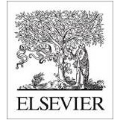The solution of a three-dimensional underwater acoustic field has always been a key problem in computational ocean acoustics. Traditionally, this solution is usually obtained by directly solving the acoustic Helmholtz equation using a finite difference/finite element algorithm. Solving the three-dimensional Helmholtz equation directly is computationally expensive. For quasi-three-dimensional problems, the Helmholtz equation can be processed by the integral transformation approach, which can greatly reduce the computational cost. In this paper, a numerical algorithm for a quasi-three-dimensional sound field that combines an integral transformation technique, stepwise coupled modes and a spectral method is designed. The quasi-three-dimensional problem is transformed into a problem resembling a two-dimensional line source using an integral transformation strategy. A stepwise approximation is then used to discretize the range dependence of the two-dimensional problem; this approximation is essentially a physical discretization that further reduces the range-dependent two-dimensional problem to a one-dimensional problem. Finally, the Chebyshev--Tau spectral method is employed to accurately solve the one-dimensional problem. We provide the corresponding numerical program SPEC3D for the proposed algorithm and describe some representative numerical examples. In the numerical experiments, the consistency between SPEC3D and the analytical solution/high-precision finite difference program COACH verifies the reliability and capability of the proposed algorithm. A comparison of running times illustrates that the algorithm proposed in this paper is significantly faster than the full three-dimensional algorithm in terms of computational speed.
翻译:三维水下声学场的解决方案一直是计算海洋声学中的一个关键问题。 传统上, 这种解决方案通常是通过使用有限差异/ 无限元素算法直接解决声学 Helmholtz 方程式获得的。 直接解决三维 Helmholtz 方程式是计算上昂贵的。 对于准三维问题, Helmholtz 方程式可以通过综合转换方法处理, 这可以大大降低计算成本。 在本文中, 一个准三维声音场的数字算法, 结合一个整体转换技术、 步进式组合模式和光谱方法。 准三维问题被转化成一个问题, 利用一个整体变法战略将二维线线源混合在一起。 然后, 使用一步近似近似法将二维问题的范围依赖分解; 这种近似是一种物理分解, 进一步将依赖范围的二维问题降为一维问题。 最后, Chebyshev- Tau 光谱法方法被设计成一个精确的一维变换技术, 3 参数被转换成一个二维线线线线源源数据, 我们用对应的SPEC- 缩缩算算法 分析 和 的直数级计算法, 的直数级分析能力,, 的直译算法 的直数级 的计算 的精确性分析能力, 和直数级 直数级 的算法, 的精确度 的算法 。



